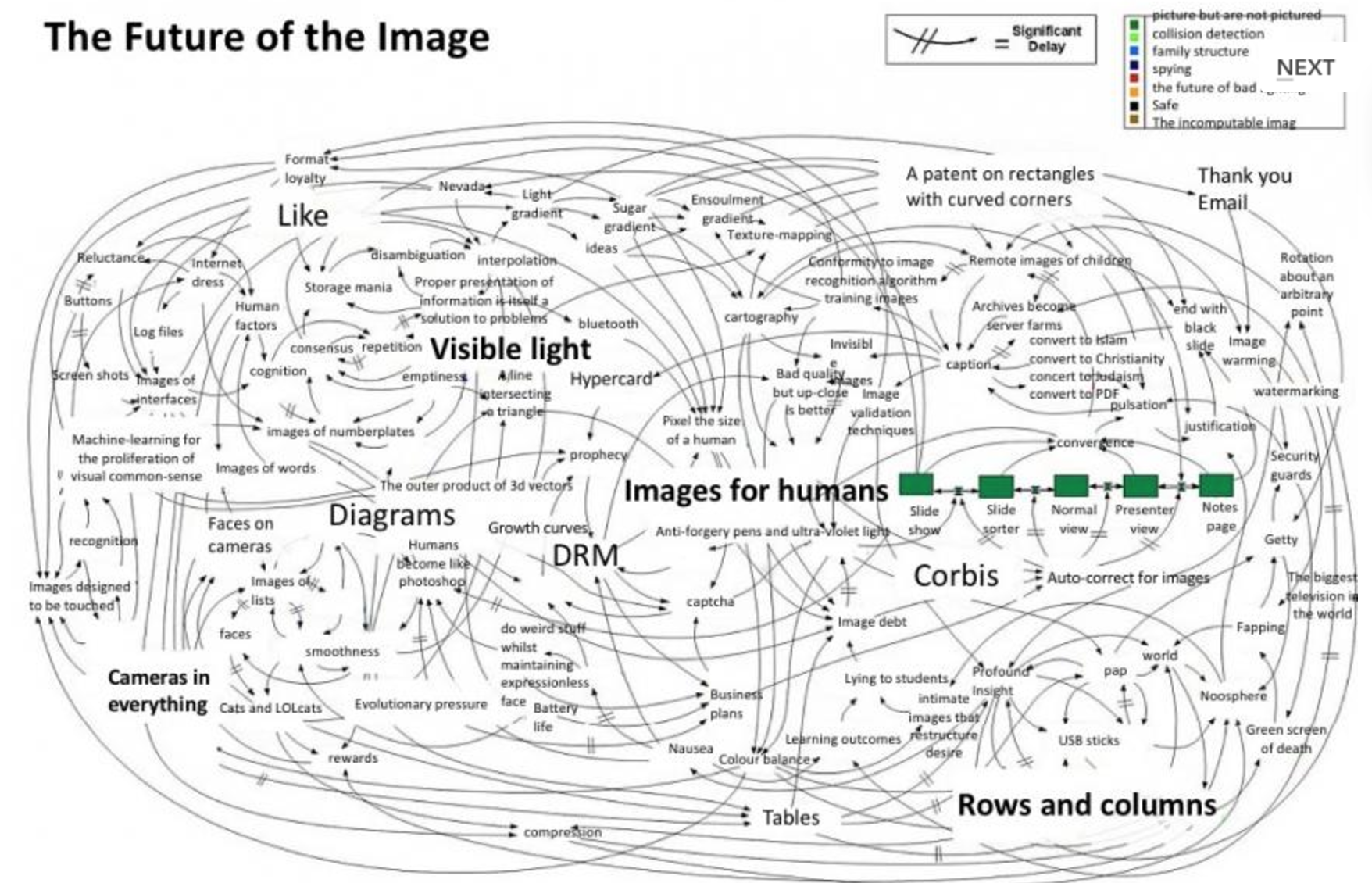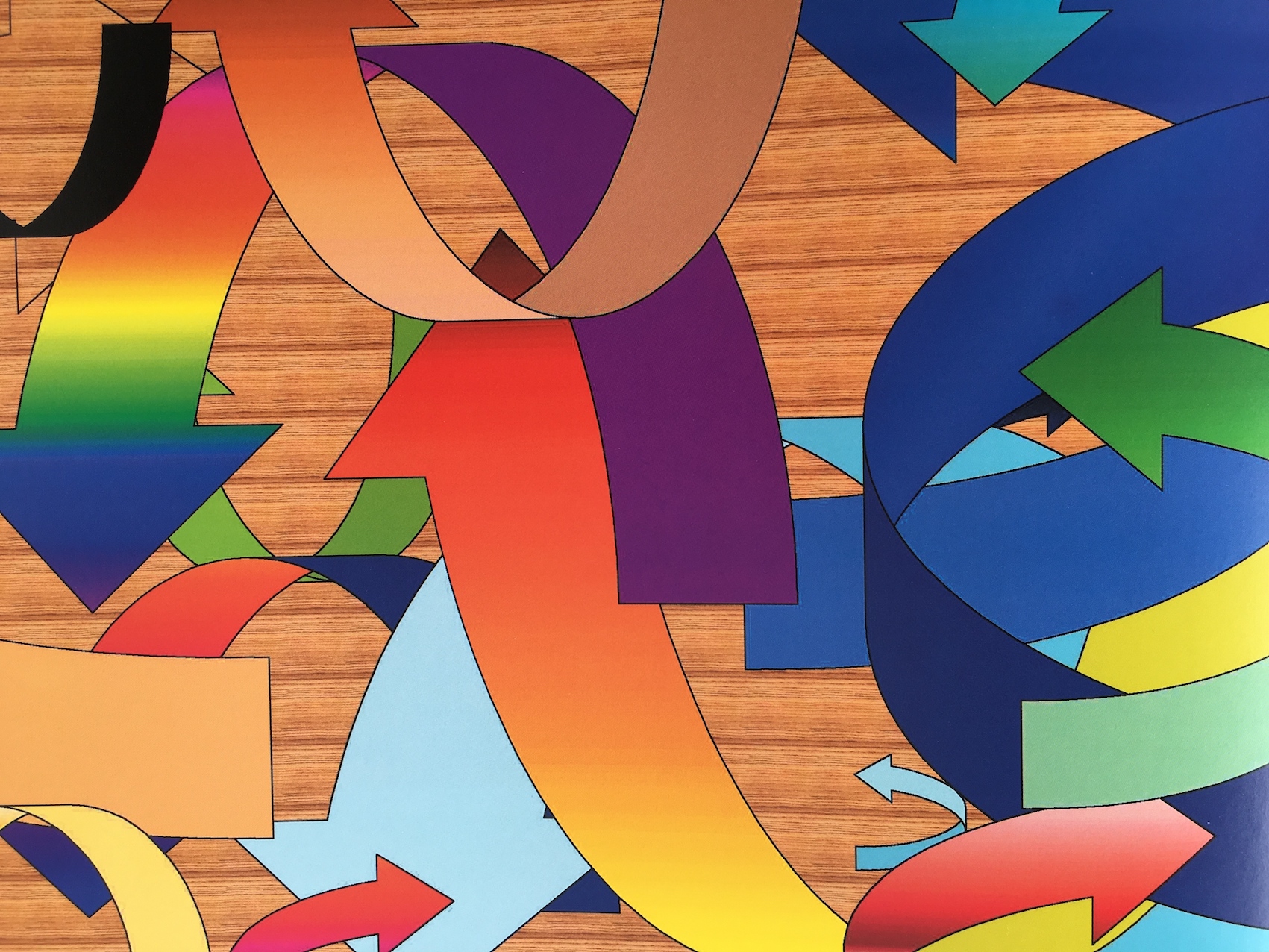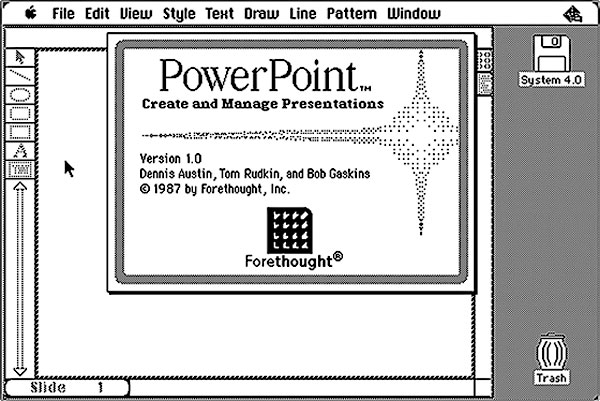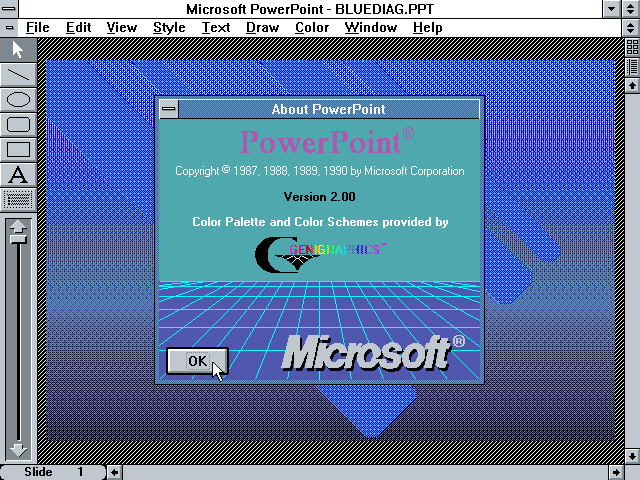29 Bullets
1. When we've understood this slide, we'll have won the war
General Stanley McChrystal, the leader of NATO and US forces in Afghanistan was once confronted with an extremely dense and intricate PowerPoint slide detailing American military strategy. "Once we've understand that", he said "we'll have won the war." This was not the first time someone had complained about a PowerPoint slide, it will not be the last. But his statement was more profound than he knew, because the real mystery is not so much 'why is that slide so complicated?' but more 'how come the army is using PowerPoint to communicate military strategy to its generals' or indeed 'how come almost every organisation in the world is using PowerPoint to communicate almost everything to almost everybody?'. That's the real question. How come PowerPoint is everywhere? How has it been so successful for so long? How has nothing ever come close to disrupting or replacing it?
Once we've understand that, we'll have understood the modern world.
2. A billion installs can't be wrong
PowerPoint has been installed more than a billion times now. Very few of those installs were free. People paid for it. They still do. You could make a very compelling case that PowerPoint is one of the most successful and influential piece of software ever created.
Yet its role in culture is to be the butt of jokes, the instigator of sighs, groans and eye-rolling. PowerPoint has been blamed for declining standards of literacy, corporate failure and the Challenger Disaster. 'Death by PowerPoint' was meant, in that case, quite literally.
3. Biro, Hoover, PowerPoint
I asked the anthropologist and designer Georgina Voss to explain PowerPoint's success. She said this:
PowerPoint has become the default for what a presentation is – more than just 'biro' or 'hovver' describing any ballpoint pen or vacuum cleaner, but actually moulding in its affordances and use behaviours such that using any non-PowerPoint program becomes more difficult. People in the Global North who have come through standard schooling and workplaces understand, broadly, how to use PowerPoint.
4. It’s PowerPoint, even if it’s not
PowerPoint is so dominant that most of its competitors, Keynote, Google Slides, aren't even challenging its basic model - a linear flow, one 'slide' at a time, images and words.
5. The rhetorical power of visual speech
Katrina Sluis is the Digital Curator at London's Photographers’ Gallery.
 The Future of the Image, PowerPoint Polemics, 2015 © Olga Goriunova & Matthew
She's just put on a show featuring artists and thinkers 'responding' to PowerPoint. She told me she believes PowerPoint has also been surfing a cultural wave for the last 29 years - the growing importance of the image. She told me this:
The Future of the Image, PowerPoint Polemics, 2015 © Olga Goriunova & Matthew
She's just put on a show featuring artists and thinkers 'responding' to PowerPoint. She told me she believes PowerPoint has also been surfing a cultural wave for the last 29 years - the growing importance of the image. She told me this:
It's the arrival of visual speech, in a way, which you kind of see with the camera phone. And the way in which, in the attention economy, the image is reified. Images have a kind of rhetorical power now in contemporary culture.
6. Presentation as therapy
The show reveals something important about PowerPoint. It's core purpose is to let you share ideas by playing with images. Our organisations give us a copy so we can be more productive, we actually use it to express ourselves. Katrina:
It's therapeutic. I guess what's interesting about PowerPoint is it mixes the corporate business presentation with the possibility of creativity, and, the idea of personal expression. I think it offers just enough personal customisation for it to be seen as a creative act for many people. I wonder if that explains its persistence, the tension between the boring corporate aesthetics and the potential to put a slide of your children to nail your message home.
7. It’s what everyone has
Stefanie Posavec is a designer and illustrator. She works with clients big and small, but tells me that they all have one thing in common - PowerPoint. It's the design tool that everyone has:
If you design something for somebody they say ' I don't have a design programme, I have PowerPoint. Can you make me a brochure that works in PowerPoint so I can change it? - because that's the only way that I know how to work with images.’
8. And it does the job
And, as a way to work with images, it’s pretty damn good.
 David Byrne: E.E.E.I. (Envisioning Emotional Epistemological Information)
It can’t do everything, but it does enough. The singer and artist David Byrne loves the way it lets you work with images quickly and he enjoys its restraints:
David Byrne: E.E.E.I. (Envisioning Emotional Epistemological Information)
It can’t do everything, but it does enough. The singer and artist David Byrne loves the way it lets you work with images quickly and he enjoys its restraints:
When you pick up a pencil you know what you're getting — you don't think, 'I wish this could write in a million colors'.
9. Lingua franca
PowerPoint is how organisations communicate. Email someone a PowerPoint file and there's a high chance that they'll be able to open it. Most organisational knowledge is probably stored in PowerPoint files. (Though it feels like I should be writing that as 'knowledge' and 'stored') Microsoft understand this power, of course, and they work very hard to make PowerPoint backwardly compatible. You can open a PowerPoint 3.0 file from 1992 in today's version on an iPad Pro and all the animations will run as intended.
10. Landscape trumps portrait
PowerPoint is now used for everything, not just presentations. Organisational aesthetics have shifted from the vertical world of the A4 document to the horizontal world of the desktop monitor and the PowerPoint print-out. All the words that used to go into a document now just get crammed onto a slide.
11. This is why we can't have nice things
Robert Gaskins, the man who invented PowerPoint, Wall Street Journal: PowerPoint Turns 20, As Its Creators Ponder A Dark Side to Succes never intended that. As he told an interviewer from the Wall Street Journal :
A lot of people in business have given up writing the documents. They just write the presentations, which are summaries without the detail, without the backup. A lot of people don't like the intellectual rigour of actually doing the work.
He was never guilty of that himself. The original business plan for PowerPoint was 53 densely worded pages, with a dozen accompanying slides.
12. Concertinas
 If you're a presentation nerd like I am you will have found your way to the archives of www.robertgaskins.com and discovered a meticulous, creative and imaginative man. The kind of man who invents a piece of ground-breaking software, retires, discovers an enthusiasm for the concertina, and immediately builds a comprehensive and detailed resource for concertinists everywhere: www.concertina.com.
If you're a presentation nerd like I am you will have found your way to the archives of www.robertgaskins.com and discovered a meticulous, creative and imaginative man. The kind of man who invents a piece of ground-breaking software, retires, discovers an enthusiasm for the concertina, and immediately builds a comprehensive and detailed resource for concertinists everywhere: www.concertina.com.
13. Bullets
Sweating Bullets, Notes About Inventing PowerPoint Your inner presentation nerd may also be delighted to discover that he's written a history of PowerPoint called Sweating Bullets. And you'll read it and realise that the real story is not the one you were imagining.
14. PowerPoint in the age of mechanical reproduction
People think they know the history of PowerPoint; some Microsoft drones slapped together something obvious, bolted it into Office, bundled it with Windows and dumped it onto every corporation in the world. The truth is that Robert Gaskins invented the category of presentation software while presentations were still being done with slides and transparent plastic sheets on overhead projectors. He imagined an age of visual computing and created a tool that would exploit it. He concentrated fiercely on creating a tool optimised for self-expression, assembled a remarkably diverse team and built a product, that, arguably, led the adoption of GUI computing - not one that piggybacked on top of it.
15. A creative tool
Gaskin's first big and non-obvious idea was the amount of creative control he would put in the hands of his users. As he told me:
The primary benefit that PowerPoint aimed at, from the start, was to put effective control of presentations into the hands of people who were expressing their own ideas. Before personal computers, presenters worked through secretaries and graphics "producers", and then early personal computers were similarly used for presentations through technical specialists (except by a few enthusiasts). All these intermediaries frequently blurred the message and introduced delays that made it impractical to get everything correct. I thought that "visual" personal computers, Macintosh and Windows, would make it possible for the people who had the ideas to directly produce all the material for their own presentations, so as to express their ideas quickly and accurately.
16. Ideas not information
 PowerPoint 1.0
Gaskins was building a tool for what he called 'content-originators'. They wanted to communicate ideas, he wanted them to love PowerPoint:
PowerPoint 1.0
Gaskins was building a tool for what he called 'content-originators'. They wanted to communicate ideas, he wanted them to love PowerPoint:
You can see this motive called out in the very first description of PowerPoint that I ever wrote...almost three years before PowerPoint 1.0 shipped. In the list of proposed "user benefits", the culminating line is: "Allows the content-originator to control the presentation"... The term "content-originator" was the best I could devise to mean "business people responsible for thinking up ideas and gaining assent to them". A word like "executive" or "knowledge worker" sounded too much like a bureaucrat, and that didn't capture my idea of the people who would most intensely love PowerPoint. A bureaucrat churning out boilerplate doesn't care that much about the details of quality; but a thinker trying to gain assent to an original idea cares passionately about giving it the best shot possible, because the result makes a real difference to the presenter's personal and business success.
17. Social skills
He also knew that making a creative product required something more than the typical group of Silicon Valley developers.
While never compromising on computer science knowledge and ability, I consciously tried to find people who also had broader interests in other fields, including social skills and communication skills. We hired developers with undergraduate and graduate degrees in liberal arts or science disciplines as well as computer science, and with experience of many different kinds, both academic and commercial.
The people we were looking for were unusual―then and now. To find them, we tried to attract the smartest people, with a variety of backgrounds and with broader education and skills than most software startups. The resulting difference in our people should be a big part of the reason for PowerPoint's success.
18. The best way to get the best team
A huge body of evidence is emerging that demonstrates that the best way to improve the performance of a team is to increase the number of women in it. Maybe that too is part of the explanation for PowerPoint's success.
Out of the original 69 people on the complete PowerPoint roster (extending from me to the last person hired while I headed the group, eight years later), half (48%) were women; 70% of all women were in technical positions, and out of all our technical people, 43% were women.
Gaskins reckons the average proportion of women in technical positions at the time was about 10% and today is around 20%.
19. You didn't buy a computer and get PowerPoint, you bought PowerPoint and got a computer
 If the new ‘visual’ world of computing was going to take off, if the Graphical User Interfaces of products like the Mac and Windows were going to seem worth buying, there would need to be a product that justified the extra cost. Word and Excel weren’t going to be it, you could use them via MS-DOS. PowerPoint was that product. A business could take the annual budget it would normally give a supplier to make slides and spend it on PowerPoint and the computer and printer they needed to go with it.
If the new ‘visual’ world of computing was going to take off, if the Graphical User Interfaces of products like the Mac and Windows were going to seem worth buying, there would need to be a product that justified the extra cost. Word and Excel weren’t going to be it, you could use them via MS-DOS. PowerPoint was that product. A business could take the annual budget it would normally give a supplier to make slides and spend it on PowerPoint and the computer and printer they needed to go with it.
They bought PowerPoint and got the PC revolution thrown in for free. As Gaskins remembers:
For the first big breakthrough version of Windows (version 3.0, shipped mid-1990) Microsoft consciously focused on PowerPoint as the "killer app" that would provide the incentive to buy a new Windows 3.0 machine...Bill Gates used pre-release versions of PowerPoint at large meetings of developers to show off what dazzling colour apps would be possible on Windows 3.0.
20. Theatre - part one
All of this added up to a new form of expression. Slideshows and overheads had existed in corporate life before but they were so hard to produce that people didn't fiddle with them, they didn't make them personal. PowerPoint turned it into something more like theatre. Gaskins told me:
I personally had studied Shakespearian drama for more than a decade, and I had frequently re-read Erving Goffman's influential book The Presentation of Self in Everyday Life, in which Goffman famously applies "dramaturgical analysis" to social interaction, using the extended metaphor of theatrical performance. So for many years I had been used to thinking about everyday social interaction in terms of theatre; and because my own jobs since getting out of school had depended heavily on my making persuasive presentations, I'd thought a lot about how to control them for best dramatic effect.
21. Theatre - part two
29 years later designer Stefanie Posavec concurs. I asked her if designing for PowerPoint feels more like designing for screen or for print. She said, neither:
It feels like it's a play. It is a really weird way of designing, this is a whole other way of communicating.
It's a strange way of thinking about how to communicate a message. It's time based. So much of it is based on this rhythm, the rhythm of the story. You have big reveals, and you have your jokes where you press the button. You have to figure out what your rhythm is and how you play the PowerPoint machine, like an accordion, whether you're fast or slow will change the outcome of your presentation.
From the accordion to the concertina, the long, strange PowerPoint journey.
22. The original bicycle for the mind
Steve Jobs once said that the personal computer was like a 'bicycle for the mind'. PowerPoint was perhaps the first product to make that a practical reality for millions of people.
23. Nibbled to death
The modern world of business apps is very different to the one PowerPoint grew up in. The monolithic integrated suites are being nibbled to death by tiny applications networked via the internet, doing one thing very well and blurring the line between personal and productive in a way that PowerPoint pioneered.
24. Fight the PowerPoint
That will happen to PowerPoint. If you want to collaborate on a presentation then Google Slides is great for that. If you want to just chuck a bunch of words into an app and have them nicely styled there are lots of HTML based presentation tools which will let you do that. There's Prezi for people who prefer a less linear narrative and don’t mind occasional motion sickness. Microsoft themselves have created a product called Sway designed to be better at some of the things PowerPoint gets co-opted for - book reports, websites, that kind of thing.
25. Multiplicity
But the big, interesting challenge for PowerPoint is the changing technological environment. It was built for a world of PCs. We're now in a world of multiple devices, multiple screens and presentations happening in multiple locations at the same time.
To get a hint of what might happen to presentations in a context like this, I went to visit a company called Oblong.
26. Slide park
 Oblong - Mezzanine
John Underkoffler started Oblong. He's famous as the designer behind the futuristic interfaces in Minority Report. With Oblong's new product - Mezzanine - he might have found the way to make some of those notions a practical reality.
Oblong - Mezzanine
John Underkoffler started Oblong. He's famous as the designer behind the futuristic interfaces in Minority Report. With Oblong's new product - Mezzanine - he might have found the way to make some of those notions a practical reality.
The first thing you notice in their demonstration suite is that you're looking at multiple displays, on more than one wall. Mezzanine was conceived for a world where screens are cheap and ubiquitous. At the front of the room, where there'd normally be one big monitor, there are three - all showing different things. You can put things alongside each other, you can compare things on different screens.
Oblong say their big clients absolutely loves this - they can park a slide to one side of the presentation while they go on with the rest of the story. The content then always sits in the customer's mind. That seems simple, but it expands the possibilities of what a presentation can be.
27. “We make all the pixels in the room universally interoperable”
Mezzanine also connects to the screens in your pocket and your bag. And lets you escape the confines of a single presentation tool. An engineer working on a CAD model doesn't have to grab images and stick them into PowerPoint, they just bring the CAD programme onto one of the screens in the room.
Another of Obolong's clients describe this as "delinearising the meeting" - and Underkoffler's team are enthused about the liberating, democratising power of this non-linearity. They're trying to 'design out' the power dynamics of PowerPoint. They don't believe you can "collate the entire knowledge of a business into a single track" and then just present it.
The modern meeting has to be about teams and collaboration, not hierarchy and presentation so they're trying to enable a "hive mind - more fluid, more interconnected."
28. One damn word after another
New Yorker - Absolute PowerPoint Which is great. Except sometimes you want someone to actually do a presentation. Robert Gaskins is fond of quoting the linguist and psychologist Steven Pinker talking to the New Yorker about PowerPoint:
Language is a linear medium: one damn word after another… When properly employed, PowerPoint makes the logical structure of an argument more transparent.”
That’s what people seem to hate about PowerPoint, but it's also its superpower. It forces you to put your ideas in order - that might be a constraint but it's often a good one. PowerPoint invites you to focus, to look at your story and put it in a useful and persuasive order.
That so many of us so often fail to do that is our own fault.
29. Shuffle
mix Powerpoint slides (content) randomly? I asked everyone I met on this journey into PowerPoint what feature they'd add if they could. The best idea was from Katrina Sluis, curator at the Photographer's Gallery - she suggested a shuffle button.
That would break the non-linearity wouldn't it?
Maybe that's all PowerPoint needs for the next 29 years.
 (@undermanager)
(@undermanager)
Notes
I originally wrote this for Wired Magazine. This is the unsubbed version, the version I sent to them, laid out using the marvellous Tufte.css (with my own half-baked tweaks) because I thought that might be amusing. And as a way to experiment with an online essay format.